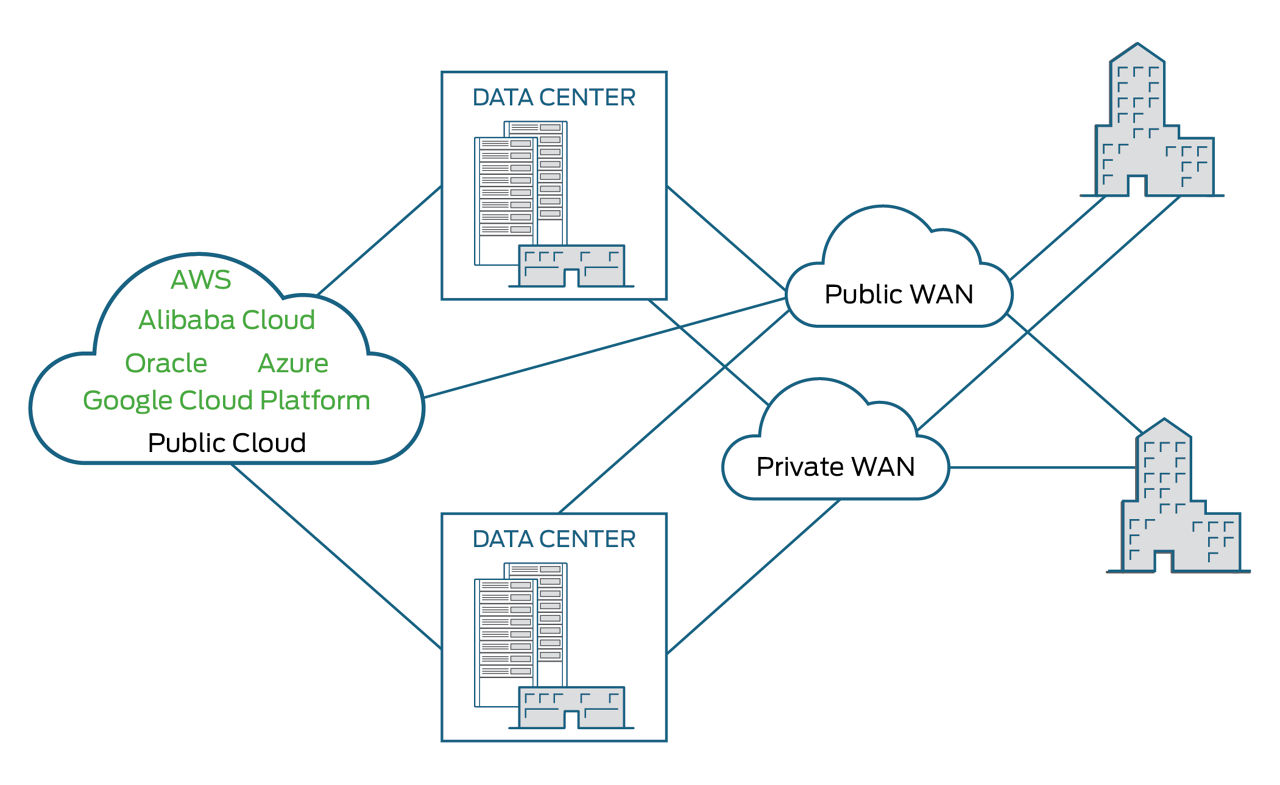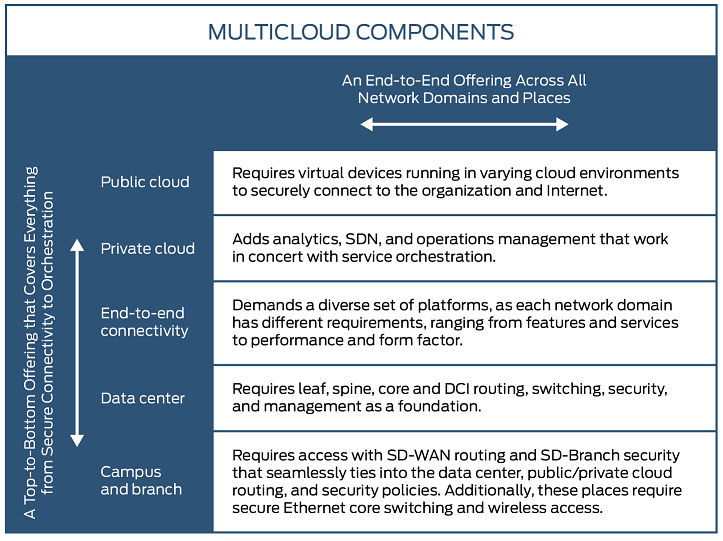What is multicloud?
What is multicloud?
Multicloud is a cloud computing deployment model that enables organizations to deliver application services across multiple private and public clouds containing some or any combination of the following: multiple cloud vendors, multiple cloud accounts, multiple cloud availability zones, or multiple cloud regions or premises.

For example, a multicloud could include: two public Infrastructure as a Service (IaaS) providers, a public Platform as a Service (PaaS), on-demand management and security systems from public clouds, a private cloud IaaS for company systems of record, and a private Container as a Service (CaaS) stack on either public or private IaaS for systems of engagement and cloud-native applications.
According to the National Institute of Standards and Technology, different cloud computing deployment models are defined as:
- Private cloud—The cloud infrastructure is provisioned for exclusive use by a single organization comprising multiple consumers. It may be owned, managed, and operated by the organization, a third party, or some combination of them, and it may exist on or off premises.
- Public cloud—The cloud infrastructure is provisioned for open use by the general public. It may be owned, managed, and operated by a business, academic, or government organization, or some combination of them. It exists on the premises of the cloud provider.
- Hybrid cloud—The cloud infrastructure is a composition of two or more distinct cloud infrastructures (private or public) that remain unique entities, but are bound together by standardized or proprietary technology that enables data and application portability.
Contrail Provider Cloud is an example of IaaS that is often used as a foundation for private cloud.
While most public clouds offer IaaS, many offer more services that may be termed Services as a Platform (SaaP), like a disaggregated PaaS.
Benefits of a Multicloud
High availability—multicloud provides redundancy and protection for an organization’s services and data storage against security threats and outages. If one cloud is unavailable, other clouds remain online to run applications and service users.
Flexibility—multicloud offers organizations the choice and flexibility of selecting the “best” of each cloud type to suit their particular business needs, economics, locations, and timing. Typically, organizations use several different clouds to manage their data, infrastructure, and applications. Organizations can avoid ‘vendor lock-in’ if they use multicloud wisely to maintain application and data portability.
Cost effectiveness—multicloud enables organizations to best control their economics, weighing capital and operational expenditures, and taking advantage of public cloud and infrastructure vendors competing on price. By using a public cloud service, organizations can also deliver additional functionality to their customers without having to hire personnel or spend their own time managing the service and all its dependencies. Additionally, by planning service capacity allocation through the multicloud, organizations can optimize costs for specific service-level requirements and elastic scale.
Why Build a Multicloud?
By building a multicloud, organizations can use and benefit from multiple services from multiple cloud hosting providers. Connectivity that provides end-to end reach is key for the multicloud! How connectivity is provided can either help or hinder efforts to extend end-to-end security and operational control across a multicloud architecture.
Multicloud, considered end-to-end, is more than data centers and public clouds; it also includes connecting applications to each other and to your campus and branch sites where your users, staff, and customers engage. This reality requires the following multicloud components:

How to Prepare for a Multicloud Architecture
Because a multicloud architecture is such a vast environment, organizations should properly prepare to manage this inevitable reality when using, or considering using, a cloud architecture.
- Unify the toolchain: A unified toolchain effort is one where developers rationalize a base DevOps pipeline, application runtime cluster, and middleware stack that ideally can serve most of the organization’s projects. Tools need to work on any cloud infrastructure (including legacy infrastructure). Encourage open-source-based services that are managed in many clouds, or ones that organizations can bring and manage on their own.
- Connect the clouds: Multiple clouds need to be connected together to enable pipeline automation, allow split application tiers, and secure data replication for warehousing or distributed applications, and backups for disaster recovery and avoidance.
- Unify and simplify policy: Use cloud management platforms to elevate the organizations’ orchestration in and across the clouds. Unify configuration and management with federated or global controllers. Use abstraction in provisioning models and APIs.
- Plan and prepare upfront: Develop a deliberate strategy for multicloud as an IT platform, taking time to plan and build the organization’s ideals. Avoid rushing in, which could result in developers consuming services at will and limit the organization’s future flexibility.
Working across multiple cloud environments, organizations can maximize their ROI while minimizing risks associated with individual cloud environments. The flexibility and value added by a well-managed multicloud platform leads to continued business advantage and agility. To review recent cloud adoption statistics, click 1 State of the Cloud Report.

